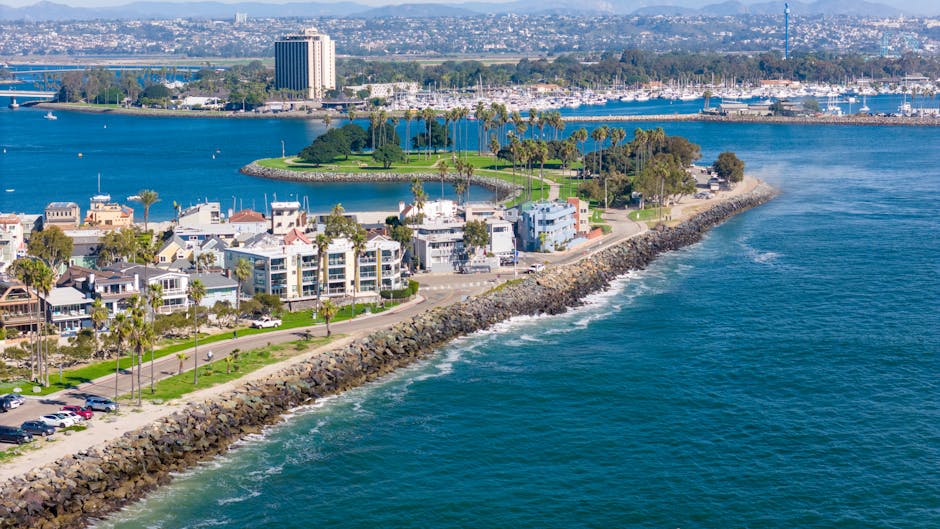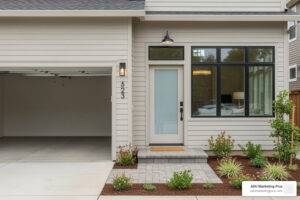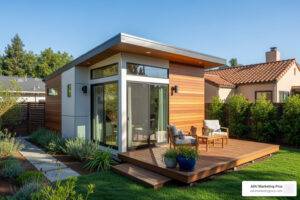San Diego’s ADU Market: From the 2019 Boom to Today’s Opportunities
The question of how many ADU permits San Diego 2019 saw reveals a pivotal moment in the city’s housing history. The answer—627 ADU permits—wasn’t just a statistic; it was a seismic shift. This figure represented a massive 135% jump from 2018 and signaled that accessory dwelling units (ADUs) had arrived as a mainstream solution to San Diego’s deepening housing crisis. Before 2019, ADUs were a niche concept, tangled in red tape. After 2019, they became a cornerstone of the city’s strategy for creating more homes.
Quick Facts:
- 627 ADU permits issued by the City of San Diego in 2019, a record-breaking number at the time.
- 135% increase from the 266 permits issued in 2018, showcasing an explosive growth curve.
- 15,575% growth from 2015, when a mere 4 permits were issued, highlighting the dramatic impact of policy changes.
- 823 total ADUs permitted in the City of San Diego during the 2018-2019 period combined, establishing a powerful new trend.
This explosive growth was no accident. It was the direct result of bold and strategic policy changes enacted by city and state leaders who recognized the untapped potential of backyards and underused spaces. By systematically dismantling barriers—slashing fees, streamlining the approval process, and eliminating outdated parking requirements—they open uped a wave of private investment in housing. The 2019 boom positioned San Diego as a major player in California’s ADU movement, creating a surge of momentum that continues to shape the market today.
For homeowners, this shift transformed their properties into potential sources of rental income, spaces for multigenerational living, and tools for building long-term wealth. For ADU construction and architecture firms, the regulatory changes that drove these numbers created a vibrant and lasting market. Understanding the dynamics of the 2019 boom is essential for navigating the opportunities that continue to define San Diego’s housing landscape for homeowners and ADU professionals alike.
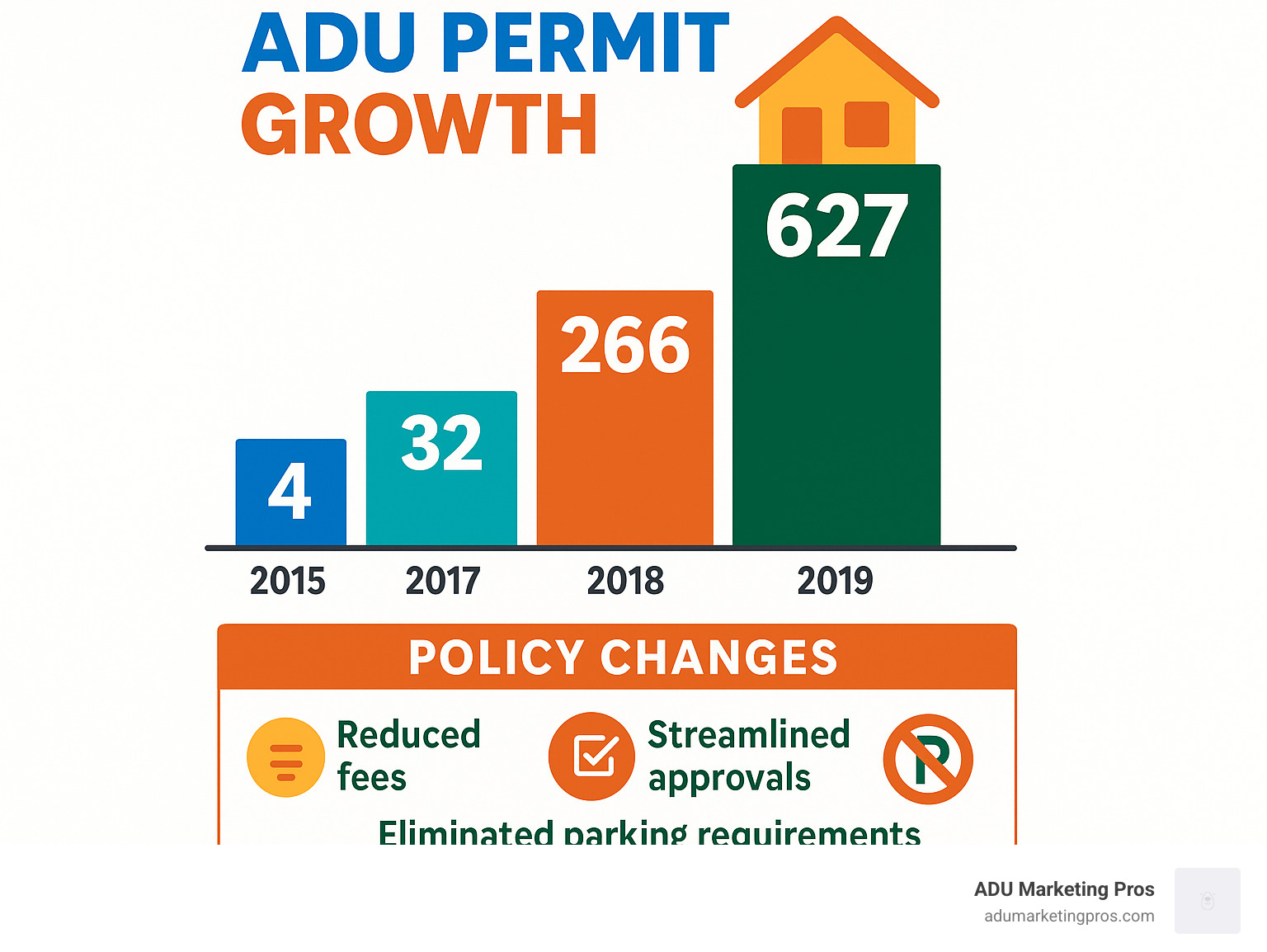
How many adu permits san diego 2019 word roundup:
The 2019 Turning Point: A Look at the Numbers
The final tally for 2019 was 627 ADU permits issued by the City of San Diego alone. This figure marked the moment accessory dwelling units transitioned from a niche concept, known only to savvy developers and architects, to a mainstream housing solution acceptd by everyday homeowners. The journey from just 4 permits in 2015 to 627 in four short years illustrates a fundamental change in how the city approached housing creation.
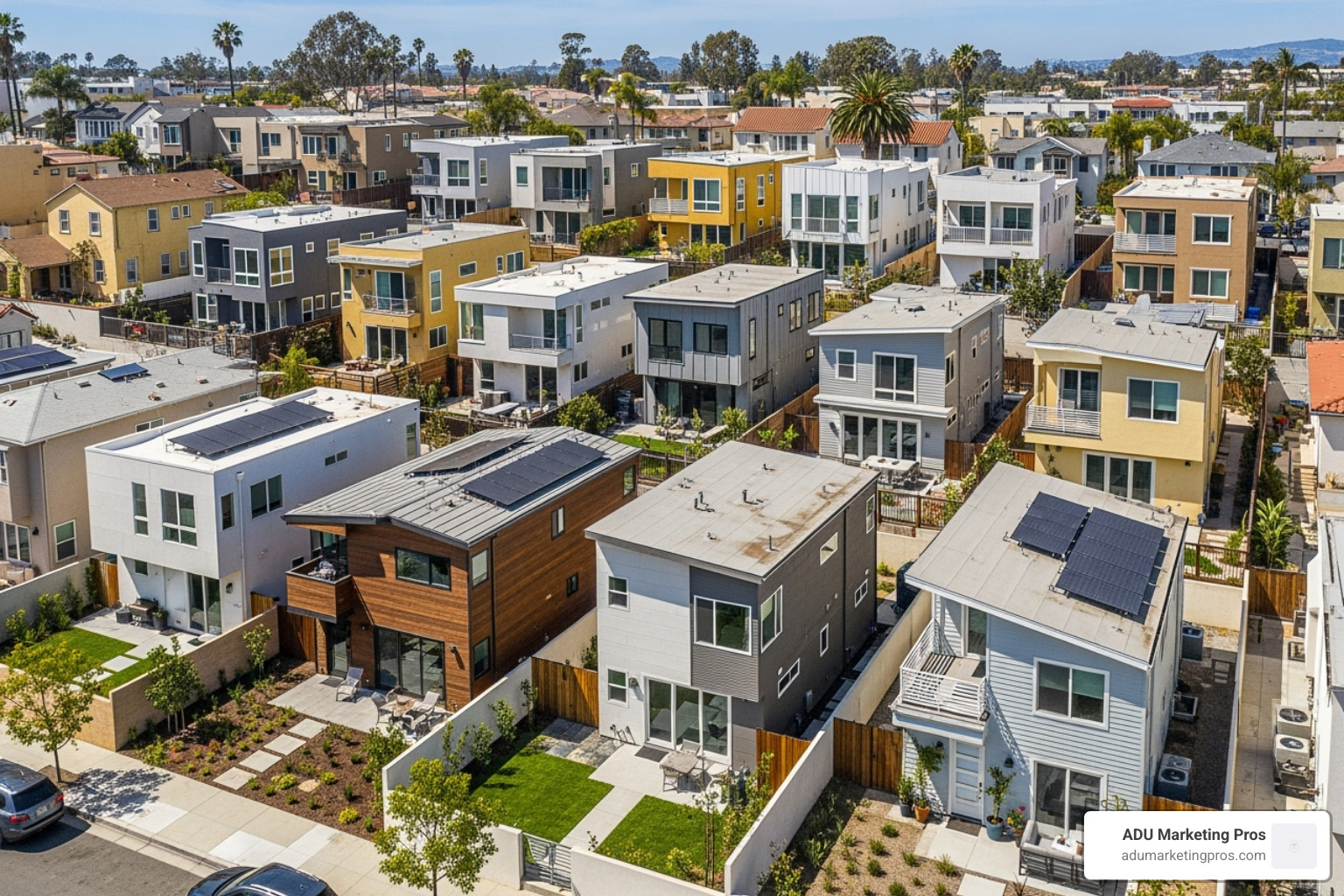
A Year of Explosive Growth
The 135% increase from 266 permits in 2018 was staggering, but it wasn’t just about the percentage. It represented hundreds of individual homeowners making the decision to invest in their properties and their communities. This exponential rise reflected years of policy work finally bearing fruit, meeting a groundswell of demand. Homeowners saw ADUs as a practical tool to generate rental income to offset mortgages, house aging parents in a supportive environment, or provide a landing spot for adult children navigating an expensive housing market. Each permit represented a family taking control of their financial future while simultaneously contributing a much-needed housing unit to the city’s inventory.
This growth was a direct, grassroots response to the housing crisis. Instead of relying solely on large-scale apartment complexes, the city empowered its residents to become part of the solution. This distributed approach to development, often called “gentle density,” allowed neighborhoods to grow and evolve without drastically changing their character, offering a practical way for individual homeowners to contribute to the housing supply while building intergenerational wealth.
City vs. County: A Broader Look
When discussing how many ADU permits San Diego 2019 saw, it’s crucial to look at the regional picture. The momentum wasn’t confined to the city limits. From 2012 through 2019, the City of San Diego issued 869 total ADU permits, while the unincorporated areas of San Diego County issued 568 permits. This shows a coordinated, region-wide effort.
The County of San Diego complemented the city’s efforts with its own forward-thinking initiatives. Recognizing the unique challenges in its unincorporated communities—which range from rural areas like Julian to suburban neighborhoods like Spring Valley—the County launched several programs. These included developing a portfolio of pre-approved building plans to save homeowners time and money on design, and a trial impact fee waiver program that launched in early 2019. This regional coordination created a powerful synergy, establishing San Diego County as a whole as a leader in California’s ADU movement and ensuring that homeowners across the region had a viable path to building.
The “Why” Behind the Boom: Lasting Policy Changes Driving the Market
The surge in ADU permits that began in 2019 wasn’t a fluke; it was engineered. A potent combination of local policy reforms, landmark state legislation, and new financial incentives converged to dismantle decades of regulatory barriers. Understanding these foundational drivers is essential for anyone looking to steer the ADU market today, as their effects are still profoundly felt.
San Diego’s Pro-ADU Policy Shift
In the years leading up to 2019, San Diego city planners made several critical changes that transformed a bureaucratic maze into a clear path for homeowners. These weren’t minor tweaks; they were fundamental reforms detailed in resources like the city’s Companion Unit Handbook. Key changes included:
- Reduced Fees: The city significantly cut or waived hefty impact fees, which could previously add tens of thousands of dollars to a project’s cost, making many ADUs financially unfeasible. This was arguably the single most important local change.
- Streamlined Approvals: San Diego shifted ADU applications from a discretionary review process (which was lengthy, uncertain, and could be derailed by neighbors) to a ministerial, “over-the-counter” review. If a project met the objective zoning standards, it had to be approved within a set timeframe, providing homeowners with much-needed certainty.
- Expanded Building Areas: The city relaxed rules on setbacks and lot coverage, allowing ADUs to be built in more locations, including above garages and in side yards where they were previously prohibited.
- Eliminated Parking Requirements: For ADUs located in transit-priority areas or within a certain distance of public transit, the city eliminated the requirement to build new off-street parking spaces. This was a game-changer in dense, older neighborhoods where adding parking was often physically impossible or prohibitively expensive.
These local reforms remain critical for homeowners today. For the latest on local rules, see the San Diego ADU Laws.
The Impact of Statewide California ADU Regulations
Simultaneously, California was leading a statewide ADU revolution. A series of powerful state laws, including AB 68 and AB 881 (which took full effect in 2020 but were built on the momentum of earlier bills), created a strong legal framework that supported ADU development. These laws established a baseline of rights for homeowners, overriding overly restrictive local ordinances. Key state mandates included:
- Requiring cities to allow both a standard ADU and a Junior ADU (JADU) on the same property.
- Capping permit review times to 60 days.
- Prohibiting owner-occupancy requirements for standard ADUs until 2025 (a provision that has since been extended).
- Setting maximum size limits that cities could not undercut.
This top-down support from Sacramento, detailed on the California Department of Housing and Community Development (HCD) website, empowered pro-housing cities like San Diego to push their own policies even further, knowing they had state backing. You can learn more about these broader regulations through California ADU Requirements.
Financial Incentives and How Many ADU Permits San Diego 2019 Benefited
Financial incentives were the final, crucial piece of the puzzle. The city’s fee reductions, combined with the County’s trial program to waive impact fees in unincorporated areas, directly lowered the barrier to entry. This made projects pencil out for a much broader range of families, not just the wealthy. These cost-reduction strategies were instrumental in launching the 2019 boom by shifting the return-on-investment calculation for thousands of homeowners. They set a precedent for ongoing efforts to make ADU construction financially viable, proving that when the financial problems are lowered, homeowners are ready and willing to invest in creating housing. Understanding the full scope of costs is essential, and resources on ADU Permit Cost California can provide a clearer picture.
A Tale of Two Cities: San Diego’s 2019 ADU Numbers in Context
The 2019 boom didn’t happen in a vacuum. It cemented San Diego’s status as a major player in California’s statewide ADU landscape. While not the largest market by volume, its explosive growth rate demonstrated the power of its policy reforms. A look at the numbers from that era shows how the city compared to other major markets, a competitive position it has worked to maintain ever since.
| City / County | 2019 Permits | Total Permits (2012-2019) |
|---|---|---|
| Los Angeles (City) | 6,747 | 13,431 |
| San Francisco | N/A | 1,338 |
| San Diego (City) | 627 | 869 |
| Los Angeles County | N/A | 867 |
| San Jose | N/A | 791 |
| San Diego County | N/A | 568 |
Data Source: UC Berkeley Terner Center for Housing Innovation. Note: N/A indicates data was not specifically broken out for that year in this dataset.
This data highlights different regional strategies and timelines. While some cities had an earlier start, San Diego’s explosive 2019 growth showed it was a fast follower that quickly became a leader in its own right. You can view California ADU permit trends by jurisdiction for more details.
San Diego vs. Los Angeles
Los Angeles has long been the epicenter of California’s ADU development, issuing a staggering 6,747 permits in 2019 alone. As a much larger metropolis with an even more acute housing shortage, LA’s sheer volume is unsurprising. However, San Diego’s story is one of velocity. While LA paved the way, San Diego’s 135% year-over-year growth demonstrated a remarkable ability to rapidly scale its ADU program. San Diego effectively learned from LA’s experience, adopting and refining pro-ADU policies to fit its own urban fabric. The city proved that the LA model wasn’t an anomaly but a replicable strategy that could succeed at scale in another major Southern California city.
San Diego vs. Bay Area Hubs
Compared to the tech-driven hubs of the Bay Area, San Diego also held its own and showcased a different model of success. With 869 total permits from 2012-2019, the City of San Diego surpassed San Jose (791) and was closing the gap with San Francisco (1,338), despite the Bay Area’s intense housing pressures and earlier start. This is significant because it shows the ADU boom was a true statewide phenomenon, not one limited to a single region or economic driver. The Bay Area’s crisis was fueled primarily by the high salaries of the tech industry, whereas San Diego’s was driven by a more diverse economy including military, biotech, and tourism. San Diego’s aggressive policy reforms were highly effective in this different context, proving the ADU is a versatile tool for tackling housing shortages across California’s diverse urban landscapes.
The Nuts and Bolts: ADU Types, Costs, and Impact in San Diego Today
Understanding the 2019 boom provides the context, but for homeowners considering a project today, the practical details are what matter most. Here’s a detailed look at the practical aspects of ADU projects in San Diego’s current market, from the types of units being built to their costs and market impact.

What Kinds of ADUs Are Being Built?
Thanks to the flexible regulations established years ago, homeowners today have a wide range of options, each with its own benefits, costs, and ideal use cases:
- Detached ADUs: These are standalone backyard cottages or granny flats. They offer the most privacy for both the main home residents and the ADU occupants, making them ideal for rental units or for independent family members. They are typically the most expensive to build but often yield the highest property value increase and rental income. In San Diego, they are popular on the larger lots found in neighborhoods like Clairemont or Rancho Bernardo.
- Garage Conversions: This is often the most cost-effective option, as it uses an existing structure. Converting a garage into a studio or one-bedroom apartment can be a relatively fast and affordable way to create a new living space. This is a very popular choice in older, denser neighborhoods like North Park, University Heights, and Ocean Beach, where lots are smaller and preserving yard space is a priority.
- Attached ADUs: These are additions that connect to the main house, often with their own separate entrance. They can be a good middle ground between a conversion and a detached unit, offering more privacy than a JADU but with potentially lower construction costs than a new detached structure due to shared walls and utility connections.
- Junior ADUs (JADUs): These are the smallest and most affordable type of ADU, created by converting existing space within the primary residence (like a spare bedroom). JADUs are limited to 500 square feet and must have an efficiency kitchen and an external entrance. They are an excellent option for homeowners looking to add a small rental unit with minimal construction and are subject to an owner-occupancy requirement.
The Price Tag: Estimating Current ADU Costs
Costs have evolved significantly since 2019 due to inflation, supply chain issues, and high demand for labor. While historical data showed costs around $400 per square foot, homeowners today should budget for a wider range, often between $400 and $650+ per square foot for a new, site-built unit. The final cost depends heavily on the level of finishes, site conditions, and project complexity. Prefabricated options may come in slightly lower on the construction side, but site work and installation costs must still be factored in.
A complete project budget can range from $150,000 for a straightforward garage conversion to over $400,000 for a larger, custom-built two-bedroom detached ADU. This total cost includes everything: soft costs (design, engineering, permits), hard costs (materials, labor), and other expenses (utility connections, landscaping, appliances). Project timelines remain substantial, typically running 10 to 24 months from the initial design concept to final inspection. Navigating the ADU permit process in California efficiently is key to managing these variables.
Impact on San Diego’s Housing Market
The cumulative impact of thousands of new ADUs built since the 2019 boom is significant and multifaceted. They provide a meaningful increase in the housing supply in a distributed, neighborhood-friendly way, adding homes without the need for massive, disruptive development projects. For homeowners, they offer a powerful financial tool. An ADU can generate significant rental income—often enough to cover the mortgage on the entire property—and can dramatically boost property values. For renters, ADUs add a diverse range of smaller, often more affordable units to the market, filling a critical gap for students, seniors, young professionals, and small families. By adding this “missing middle” housing, ADUs play a crucial role in improving overall housing affordability and creating more vibrant, economically diverse communities.
Frequently Asked Questions about San Diego ADU Permits
The explosive growth in ADU permits that started in 2019 left many homeowners with questions. Here are detailed answers to some of the most common queries about building an ADU in San Diego today.
How long does it take to get an ADU permit in San Diego?
While state law mandates a 60-day review period for permit applications, this is just one piece of a much longer process. The entire project timeline—from initial design to final inspection—typically ranges from 10 to 24 months. Here’s a rough breakdown:
- Design & Planning (2-4 months): This involves working with an architect or designer to create plans, getting structural engineering, and preparing all necessary documents for submission.
- Permit Review (2-5 months): While the city aims for a 60-day review, revisions are often required. The back-and-forth process to get the plans fully approved can extend this phase.
- Construction (6-12+ months): The actual build time depends heavily on the project’s complexity. A garage conversion may take 6 months, while a custom detached ADU could take a year or more.
Simple projects like garage conversions may move faster, while complex builds on hillside lots or those requiring significant utility work will take longer.
Do I need to live on the property to build an ADU?
Generally, no. Thanks to state laws solidified around 2020 and extended, there is no owner-occupancy requirement for standard ADUs permitted through January 1, 2030. This gives homeowners the flexibility to rent out both the primary home and the ADU, maximizing rental income potential. However, the rule is different for Junior Accessory Dwelling Units (JADUs). If you build a JADU, you must occupy either the primary residence or the JADU, with few exceptions.
What are the current size and height limits for ADUs in San Diego?
San Diego’s rules, which align with state law, are quite generous:
- Size: You can build an ADU of at least 850 square feet for a one-bedroom unit, or 1,000 square feet for a two-bedroom unit, regardless of your existing home’s size or lot coverage. The maximum size for any ADU is generally 1,200 square feet.
- Height: For a single-story detached ADU, the height limit is typically 16 feet. For a two-story ADU (which is allowed in some cases, such as above a garage), the height limit may be higher, but must conform to the underlying zone’s requirements.
- Setbacks: Setbacks have been reduced to 4 feet for side and rear yards, and in many cases, you can convert an existing structure (like a garage) with no setbacks at all.
How are property taxes assessed on a new ADU?
This is a common concern, but it’s managed fairly. Your property will not be fully reassessed at its new, higher market value. Instead, California uses a “blended assessment.” Your existing home retains its original assessed value under Prop 13. Only the value of the newly constructed ADU is added to your tax bill. For example, if your home is assessed at $500,000 and you build an ADU that cost $300,000, your new assessed value would be roughly $800,000, not the $1.5 million the entire property might now be worth.
What are the biggest challenges for homeowners building an ADU today?
Despite streamlined processes, homeowners still face problems:
- Navigating Regulations: While rules are clearer, they are still complex. Understanding specific zoning overlays, coastal commission requirements, or utility easement issues often requires professional guidance.
- Managing Construction Costs: With high demand for materials and labor, keeping a project on budget is a primary challenge. Unexpected site conditions, like poor soil or the need for a new sewer line, can lead to significant cost overruns.
- Securing Financing: While more lenders are offering ADU-specific loans, it’s not as simple as a standard mortgage refinance. Finding the right financing product—whether a renovation loan, HELOC, or construction loan—can be complex.
- Finding Qualified Builders: The ADU boom has created high demand for experienced contractors. Vetting builders, checking licenses and references, and finding a qualified team that is available can take time and diligence.
Conclusion
The story of how many ADU permits San Diego 2019 issued is ultimately about more than just a number. The 627 permits from that pivotal year represent a fundamental turning point—the moment when a combination of bold local policies and supportive state laws open uped the vast potential of our own backyards. The foundational changes from that era—dramatically reduced fees, streamlined ministerial approvals, and the elimination of prohibitive parking requirements—were not temporary fixes. They created the stable, thriving, and mature ADU market we see in San Diego today.
The ripple effects of that 2019 boom are undeniable and continue to expand. They are measured in the thousands of new homes added to our housing stock, the new rental income streams that provide financial stability for families, and the creation of a more flexible and resilient housing supply. For homeowners, ADUs continue to offer a powerful and accessible solution for housing loved ones, generating wealth, and aging in place. The momentum that began in 2019 has proven that when barriers are removed, ordinary citizens can and will become a vital part of the solution to our housing challenges.
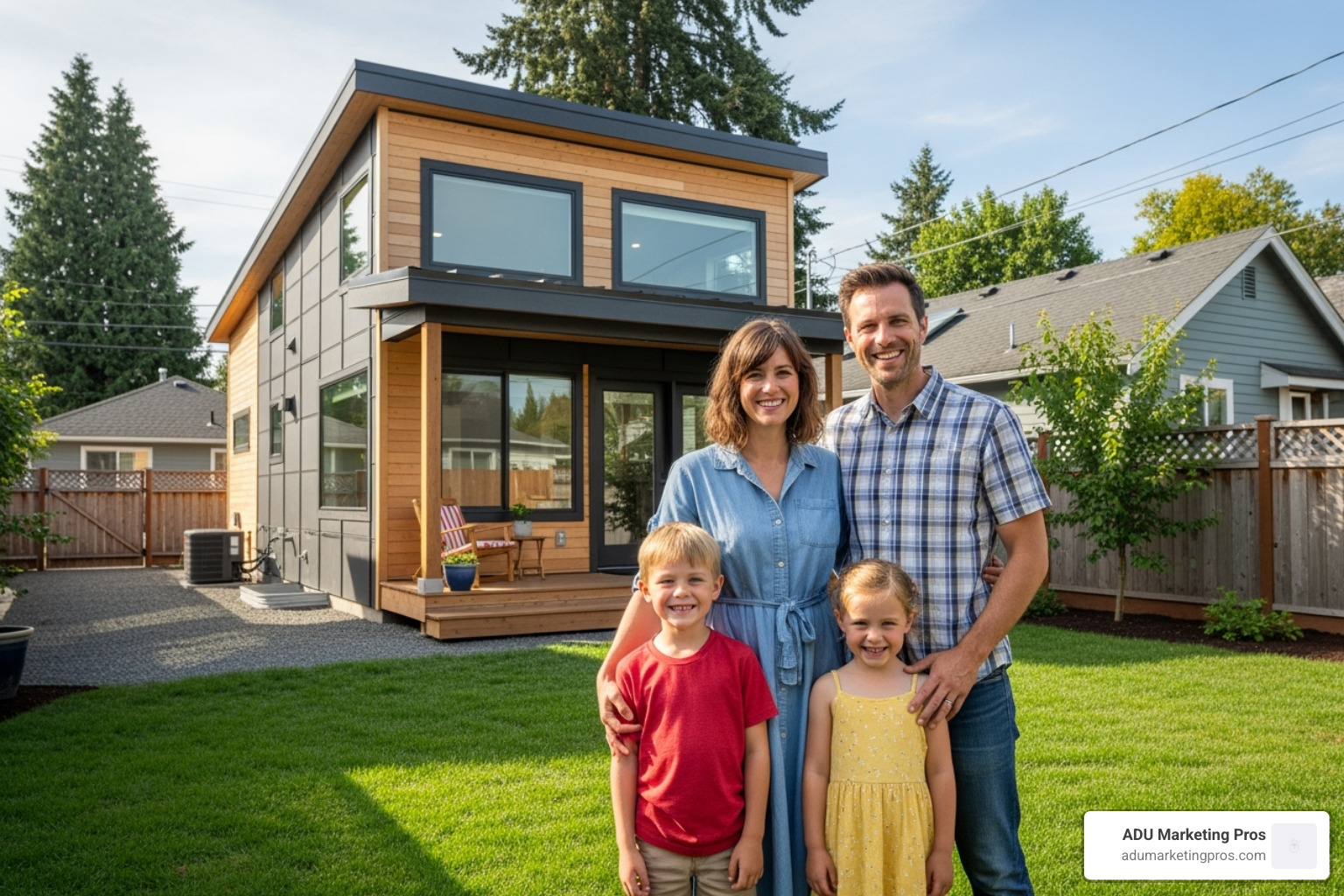
This dynamic and growing market presents incredible opportunities for the construction and architecture firms prepared to meet the demand. Connecting with motivated homeowners requires more than just a sign on a truck; it requires digital savvy and a deep understanding of the client’s journey. At ADU Marketing Pros, our specialized marketing solutions are designed to help builders stand out in this competitive landscape. We showcase your expertise, build your brand authority, and attract qualified clients who are serious about moving forward with their ADU projects.
Learn more about how to streamline your next project with resources like pre-approved ADU plans in San Diego and find how we can help your business thrive in this exciting sector. The 2019 ADU boom proved that smart policy can create tremendous opportunity, and for the businesses positioned to serve this market, that opportunity continues to grow.

